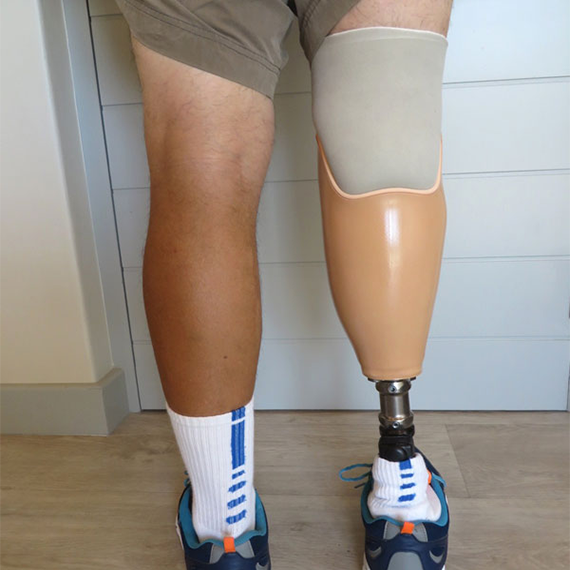
Ongoing Research on 3D printed Prosthetic Legs.
e-Nable Nepal, a non-profit organization, has been at the forefront of research and development in the field of 3D printed prosthetics. Their ongoing research focuses on creating customized prosthetic legs. However, they face unique challenges due to the differences in materials and technology between prosthetic hands and legs. This essay explores these challenges and highlights the efforts undertaken by e-Nable Nepal to overcome them.
Prosthetic hands and legs have distinct requirements when it comes to materials. While 3D printed prosthetic hands often utilize lightweight and flexible materials, prosthetic legs require sturdier and more durable materials to withstand the weight and impact of walking or running. e-Nable Nepal’s research necessitates careful material selection to ensure that the 3D printed prosthetic legs strike a balance between strength, weight, and comfort. Collaborating with material experts and conducting extensive material testing are essential steps in overcoming this challenge.
Another challenge in 3D printed prosthetic legs research lies in achieving optimal weight distribution and balance. Prosthetic legs need to provide stability and enable natural movement, which requires intricate design considerations. Unlike prosthetic hands, which primarily focus on grasp and dexterity, prosthetic legs must support body weight and withstand different terrains. e-Nable Nepal’s research involves developing advanced designs that incorporate features such as adjustable joints, shock absorption mechanisms, and alignment systems to address weight distribution and balance challenges.
Prosthetic hands and legs differ significantly in terms of functionality and the complexity of movement involved. While prosthetic hands require precision in finger movement and grip, prosthetic legs need to replicate natural walking and running patterns. e-Nable Nepal’s research involves exploring advanced biomechanical techniques, such as analyzing gait patterns and motion capture technology, to optimize the functionality of 3D printed prosthetic legs. This research enables them to develop prosthetic legs that enhance mobility, reduce energy expenditure, and improve overall user experience.
To crack the knot of customized 3D printed prosthetic legs, e-Nable Nepal recognizes the importance of collaboration and an interdisciplinary approach. They collaborate with prosthetists, orthopedic surgeons, engineers, and researchers from diverse fields to leverage their expertise. This multidisciplinary collaboration allows for a comprehensive understanding of the challenges involved and facilitates the development of innovative solutions.
The research conducted by e-Nable Nepal on customized 3D printed prosthetic legs faces unique challenges due to the differences in materials and technology compared to prosthetic hands. However, through meticulous material selection, weight distribution optimization, focus on functionality and gait analysis, and interdisciplinary collaboration, e-Nable Nepal is actively working to overcome these challenges. By addressing these obstacles, they aim to develop 3D printed prosthetic legs that are customized, comfortable, and improve the quality of life for individuals in need. With their dedication and perseverance, e-Nable Nepal’s research will contribute to advancements in prosthetic technology, enabling more individuals to access personalized and functional prosthetic leg solutions.
© e-Nable Nepal 2019-2025. Powered by Brevin Creation